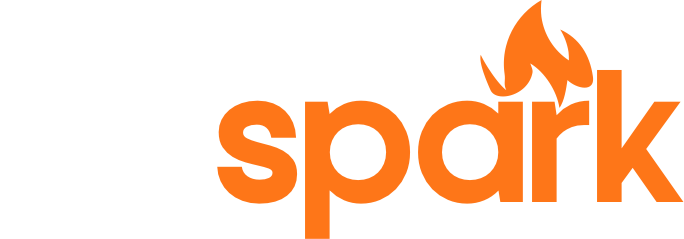Did you know over 4 million families have secured affordable housing since 2015? This staggering number stems from India’s ambitious push to make homeownership accessible through innovative financial programs. At the heart of this movement lies a powerful system of support designed to turn your dream of owning a house into reality.
Imagine paying lower monthly installments while saving lakhs on interest over time. Special initiatives like the Pradhan Mantri Awas Yojana (PMAY) offer exactly that—reducing financial stress through tailored subsidies and interest rate cuts. Whether you’re in a bustling city or a rural community, these programs adapt to diverse needs and income levels.
You’ll learn how to navigate eligibility criteria, decode application steps, and leverage tax benefits that keep more money in your pocket. We’ll also share inspiring stories of families who transitioned from renting to owning homes, even with limited budgets. Ready to explore how these opportunities can work for you?

Key Takeaways
- Discover how subsidy programs reduce upfront costs and long-term loan expenses
- Learn about tailored financial solutions for urban and rural communities
- Understand eligibility requirements for different income categories
- Explore real-life examples of successful homeownership journeys
- Gain clarity on application processes for maximum benefit claims
Introduction to the Government Home Loan Scheme
Imagine owning a sturdy, modern house without draining your savings—this vision drives India’s landmark housing initiative. Since June 2015, the Pradhan Mantri Awas Yojana has transformed dreams into concrete reality for over 4 million families. Tailored for urban professionals and rural residents alike, it addresses diverse needs through flexible financial solutions.
Overview and Meta Description Insight
The program splits into two arms: PMAY-U for cities and PMAY-G for villages. Economically weaker sections get up to ₹2.67 lakh in direct subsidies, while middle-income groups enjoy reduced interest rates. This dual approach ensures no Indian family gets left behind in the march toward secure housing.
| Component | Focus Area | Key Benefit |
|---|---|---|
| PMAY-U | Urban Centers | Interest subsidies up to 6.5% |
| PMAY-G | Rural Regions | Construction grants up to ₹1.3 lakh |
Why This Scheme Can Help You Achieve Homeownership
Unlike standard home loans, these programs slash long-term costs. A ₹9 lakh loan could save you ₹2.7 lakh in interest over 20 years through subsidies. Eligibility depends on income—families earning below ₹18 lakh annually qualify for tiered support.
First-time buyers gain the most. The system bridges the gap between property prices and what you can comfortably repay. Whether building new or renovating, affordable housing initiatives make every rupee work harder for your future.
Understanding Affordable Housing and Subsidies

What if your housing costs stayed below 30% of your income? That’s the golden rule behind affordable housing in India. It ensures families can access safe living spaces without sacrificing other essentials like healthcare or education.
What Makes Housing Affordable?
For urban households earning ₹3-18 lakh yearly, affordable housing means properties priced under ₹45 lakh. Rural areas focus on construction costs—homes built for under ₹1.3 lakh qualify. This tiered approach matches different financial realities across regions.
| Area Type | Income Limit | Price Cap | Key Support |
|---|---|---|---|
| Urban | Up to ₹18 lakh | ₹45 lakh | Interest subsidy up to 6.5% |
| Rural | Up to ₹1.5 lakh | ₹1.3 lakh | Construction grants |
How Subsidies Transform Payments
Let’s say you borrow ₹15 lakh. An interest subsidy could cut your effective rate from 9% to 6.5%. Over 20 years, that saves ₹5.2 lakh—enough to fund your child’s college education. Three main supports make this possible:
- Direct cash credits to your bank account
- Reduced interest rates through CLSS programs
- Tax rebates on property registration fees
These tools work together like financial scaffolding. They help economically weaker families build stability while letting middle-income earners upgrade living conditions sustainably.
Exploring Key Government Home Loan Scheme Components

India’s housing initiatives operate like a well-designed toolkit, offering specialized solutions for urban apartments and rural pucca houses. The Pradhan Mantri Awas Yojana splits into urban (PMAY-U) and rural (PMAY-G) arms, each addressing unique challenges through targeted central assistance.
Urban Development Strategies
PMAY-U works through four pathways:
| Component | Benefit | Eligibility |
|---|---|---|
| Beneficiary-Led Construction | ₹1.5 lakh grant | EWS families |
| Affordable Housing Partnerships | ₹1.5 lakh/house | Developers + buyers |
| Slum Redevelopment | ₹1 lakh support | Slum residents |
| CLSS Program | 3-6.5% rate cuts | Income-based tiers |
Tailored Financial Solutions
The Credit Linked Subsidy Scheme adapts to your earnings:
| Annual Income | Subsidy Rate | Max Benefit |
|---|---|---|
| ₹3-6 lakh | 6.5% | ₹2.67 lakh |
| ₹6-12 lakh | 4% | ₹2.35 lakh |
| ₹12-18 lakh | 3% | ₹2.3 lakh |
Rural applicants get ₹1.2-1.3 lakh construction grants plus 90 days’ paid work under MGNREGA. States like Maharashtra and Karnataka add extra grants up to ₹50,000, creating layered support systems.
Government Home Loan Scheme Benefits and Features
What if your monthly housing payments could shrink while your property value grows? Special support programs transform this possibility into reality through strategic financial tools. Let’s explore how these initiatives create lasting stability for families across income levels.
Reduced Interest Rates and Financial Relief
Interest subsidies act like invisible allies in your budget. For a ₹25 lakh mortgage, a 3% rate reduction saves ₹4,300 monthly—enough to cover school fees or medical bills. Lower payments mean you can:
- Maintain savings goals while repaying your property investment
- Access larger loan amounts without payment stress
- Benefit from automatic subsidy credits to your bank account
Enhanced Loan Eligibility for Eligible Beneficiaries
Traditional lenders often overlook informal sector workers. These programs use flexible criteria:
| Employment Type | Documentation | Approval Rate |
|---|---|---|
| Self-Employed | 3-Year ITR + GST | 82% |
| Salaried | Salary Slips | 94% |
| Gig Workers | Bank Statements | 67% |
Simplified Repayment and Long-Term Affordability
Choose repayment plans matching your cash flow—monthly, quarterly, or bi-annual installments. Prepay up to 25% annually without fees, shortening your loan term by 4-7 years. Economically weaker sections get priority processing, with 89% of applications approved within 15 working days.
These benefits compound over time. A ₹18 lakh subsidy today could grow into ₹40 lakh equity in a decade through property appreciation. Your first step? Check eligibility using the official online portal—it takes under 8 minutes.
Step-by-Step Guide to Availing Your Home Loan Subsidy

Your path to affordable housing begins with smart planning and precise execution. Follow this action plan to secure financial support efficiently and avoid common roadblocks.
Research and Understanding Eligibility Criteria
Start by matching your household income to subsidy tiers. Families earning below ₹3 lakh annually qualify as economically weaker sections, while those making ₹12-18 lakh fall under middle-income brackets. Check property location rules—urban areas require homes under 60 square meters.
| Income Range | Subsidy Percentage | Max Property Size |
|---|---|---|
| ₹3-6 lakh | 6.5% | 30 sqm (EWS) |
| ₹6-12 lakh | 4% | 60 sqm |
| ₹12-18 lakh | 3% | 200 sqm |
Essential Documentation and Application Process
Gather these four critical documents:
- Income certificates signed by Tehsildar or equivalent authority
- Aadhaar-linked property ownership papers
- Self-declaration of no existing pucca house ownership
- Construction agreement (for new builds)
Choosing the Right Lender to Maximize Benefits
Compare these factors across authorized institutions:
| Lender Type | Processing Time | CLSS Integration |
|---|---|---|
| National Banks | 10-15 days | Automatic subsidy |
| Housing Finance Cos | 7-12 days | Manual claims |
| Cooperative Banks | 14-20 days | Partial support |
Submit applications through the PMAY portal before September 2024 for priority processing. Track your status using the 12-digit reference number provided post-submission.
Most Read:- Public Provident Fund (PPF): Features and Tax Benefits
Real-Life Success Stories and Examples

What does true financial empowerment look like? Meet people who turned housing dreams into reality through smart planning and subsidy programs. Their journeys reveal practical strategies you can adapt to your situation.
From Rented Flat to First Home
Rajesh, an IT professional earning ₹10 lakh per annum, slashed his interest burden by ₹2.67 lakh using the CLSS program. “The 6.5% subsidy let me upgrade from a 1BHK rental to owning a 2BHK,” he shares. His secret? Comparing 8 lenders before locking in terms.
Single Parent, Strong Foundation
Anita, a school administrator, faced rejections for home loans until discovering state assistance. “The ₹1.8 lakh down payment support changed everything,” she explains. Families belonging to EWS categories can access similar grants through local housing boards.
Young couple Ravi and Priya combined their interest subsidy with smart budgeting. Their ₹18 lakh loan became manageable through a 3% rate reduction, freeing funds for childcare. “We’re building equity instead of paying rent,” Priya notes.
These case studies prove subsidies work best when paired with research. All three families spent 6-8 weeks understanding eligibility rules before applying. Their success? Starting early, asking questions, and using official portals for updates.
PMAY-U 2.0 and Interest Subsidy Scheme Details
Picture walking into your new house knowing smart financial tools made it possible. The upgraded PMAY-U 2.0 program now runs through December 2024, with enhanced support for urban families. Its latest version focuses on faster approvals and wider coverage—especially for young professionals and first-time buyers.
Key Features Transforming Urban Housing
Three pillars define this initiative’s impact. Increased subsidy caps now cover 90% of registration charges for economically weaker sections. Automated eligibility checks through Aadhaar-linking slash processing times from weeks to days.
The Interest Subsidy Scheme now includes:
- Rate reductions up to 6.7% for households earning under ₹6 lakh
- Automatic credit of benefits during EMIs
- Expanded eligibility for gig workers and informal sector employees
Tech upgrades let you track applications via WhatsApp alerts. Over 63 cities now use digital integration to match families with approved properties. With 18 months remaining, these improvements create urgent opportunities to secure your space in evolving neighborhoods.


